Home>Garden Essentials>Health Inequalities And How Green Space Can Impact The Living Environment
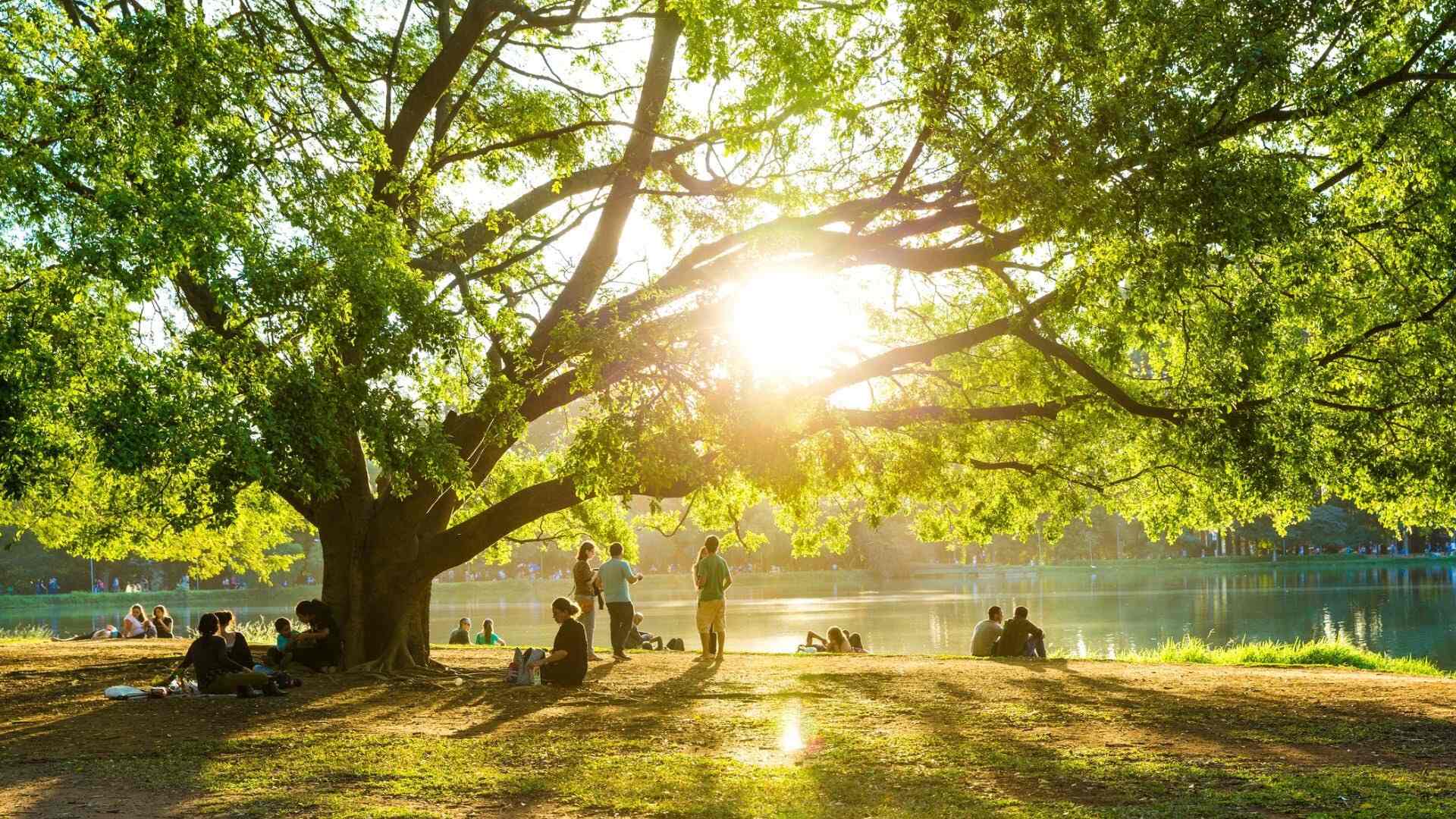

Garden Essentials
Health Inequalities And How Green Space Can Impact The Living Environment
Modified: March 7, 2024
Discover how green space such as gardens can help combat health inequalities by positively impacting the living environment. Explore the benefits of incorporating gardens for a healthier and more inclusive community.
(Many of the links in this article redirect to a specific reviewed product. Your purchase of these products through affiliate links helps to generate commission for Storables.com, at no extra cost. Learn more)
Introduction
Health inequalities have become a pervasive issue in today’s society. While access to quality healthcare plays a vital role in determining health outcomes, there are various other factors that contribute to these disparities. One of these factors is the living environment.
The living environment encompasses several aspects, including housing conditions, air quality, and access to amenities. One crucial component of the living environment that often goes overlooked is green space.
Green spaces refer to areas that are predominantly covered in vegetation, such as parks, gardens, and forests. These spaces not only add to the aesthetic appeal of the surroundings but also offer numerous health benefits to individuals.
In this article, we will explore the impact of green spaces on health inequalities and how they contribute to improving overall well-being. By understanding the significance of green space, we can advocate for equal access to these areas and foster healthier and more equitable communities.
Key Takeaways:
- Green spaces, like parks and gardens, are super important for our health and well-being. Everyone should have equal access to these spaces to stay healthy and happy.
- Being in nature is good for us! It helps reduce stress, keeps us active, and brings people together. We need to make sure everyone can enjoy green spaces for a healthier community.
Defining Health Inequalities
Health inequalities refer to the disparities in health outcomes and access to healthcare services across different population groups. These inequalities are often influenced by social, economic, and environmental factors, creating a divide in the well-being of individuals and communities.
While everyone deserves the right to lead a healthy life, certain groups face disproportionate challenges in achieving good health. Factors such as income, education, race, and ethnicity can significantly impact an individual’s access to healthcare resources, living conditions, and lifestyle choices, thereby contributing to health inequalities.
Health disparities can manifest in various ways, including differences in life expectancy, disease prevalence, and health-related behaviors. They are not solely limited to physical health but can also encompass mental health and overall quality of life.
It is important to note that health inequalities are not simply a matter of personal choices or genetic predispositions. Rather, they are deeply rooted in structural and systemic factors that shape the living conditions and opportunities available to individuals in different communities.
Addressing health inequalities requires understanding the complex interplay between social determinants of health, individual behaviors, and the wider socio-political context. By recognizing the factors that contribute to these disparities, we can implement targeted interventions that promote equal access to resources and support the well-being of all individuals, regardless of their background.
Understanding Green Space and Its Importance
Green space, also known as open or natural space, refers to any area that is predominantly covered with vegetation, such as parks, gardens, forests, and even urban green areas. These spaces are essential components of the built environment and play a significant role in enhancing the overall quality of life for individuals and communities.
One of the primary benefits of green space is its ability to provide a connection to nature. In today’s urbanized world, where concrete and buildings dominate the landscape, having access to green spaces can offer a respite from the hustle and bustle of daily life. Being in nature has been proven to have a calming effect on the mind and body, promoting relaxation and reducing stress levels.
In addition to the psychological benefits, green space also plays a crucial role in promoting physical health. Engaging in outdoor activities within a natural environment encourages physical activity, which is essential for maintaining a healthy lifestyle. People who have access to green spaces are more likely to engage in activities such as walking, jogging, or playing sports, leading to improved cardiovascular health and a reduced risk of chronic diseases.
Moreover, green spaces contribute to environmental sustainability by enhancing biodiversity and providing a habitat for various plants and animals. They help mitigate the effects of climate change by absorbing carbon dioxide, reducing air pollution, and regulating temperature. These factors are critical for creating sustainable and livable cities.
Green spaces also have an important social function. They serve as common gathering places for communities, fostering social interactions and promoting a sense of belonging. Parks and gardens provide a space for people to come together, engage in social activities, and build social connections, which are vital for mental well-being.
Overall, green space plays a significant role in improving both physical and mental health, enhancing environmental sustainability, and fostering social cohesion. Recognizing the importance of these spaces is essential for creating healthier, more livable communities that address health inequalities and promote overall well-being.
The Role of Green Space in Promoting Good Health
Green spaces play a crucial role in promoting good health and well-being. The benefits they offer extend beyond just the aesthetic appeal of nature; they have a direct impact on our physical, mental, and social well-being.
One of the key ways that green spaces promote good health is by providing opportunities for physical activity. These spaces offer an open and inviting environment for activities like walking, jogging, cycling, or playing sports. Engaging in regular physical activity has numerous health benefits, including reducing the risk of obesity, heart disease, diabetes, and certain types of cancer. Green spaces provide accessible and enjoyable settings for individuals of all ages to be physically active, improving their overall fitness levels and contributing to a healthier lifestyle.
Green spaces also have a positive impact on mental health. Spending time in nature can reduce stress, anxiety, and symptoms of depression. The calming effect of greenery and the peaceful ambiance of natural surroundings help to alleviate mental fatigue and promote relaxation. Whether it’s sitting in a park, taking a walk in a forest, or gardening in a community garden, being in green spaces can improve mood and enhance overall mental well-being.
In addition to physical and mental health benefits, green spaces also contribute to social well-being. Parks and gardens serve as gathering places for individuals, families, and communities. They provide opportunities for social interactions, leisure activities, and community events. These spaces foster a sense of belonging, promote social connections, and combat social isolation, which is crucial for maintaining good mental health.
Furthermore, green spaces contribute to improved air quality. Trees and other vegetation in green spaces act as natural air filters, absorbing pollutants and releasing clean oxygen. This helps to reduce the levels of harmful particles in the atmosphere, leading to improved respiratory health and a lower risk of respiratory diseases.
Overall, green spaces play a vital role in promoting good health by providing opportunities for physical activity, reducing stress and anxiety, fostering social connections, and improving air quality. Recognizing the importance of green spaces and ensuring equitable access to these areas can contribute to addressing health inequalities and creating healthier communities for all.
The Impact of Green Space on Mental Health
Green spaces have a profound impact on mental health, offering a range of benefits that contribute to overall well-being and psychological resilience. Spending time in nature and engaging with the natural environment can have a positive effect on various aspects of mental health.
Firstly, green spaces provide a much-needed respite from the stressors of everyday life. Research has shown that exposure to nature reduces stress, anxiety, and symptoms of depression. The calm and tranquility of green environments can help to lower cortisol levels, a hormone associated with stress, and promote a sense of relaxation and well-being. Activities such as walking in a park or sitting near a garden can provide a sense of solace and help to restore mental energy.
Furthermore, green spaces offer a sense of escape and restoration. The sounds of birds singing, the fragrance of flowers, and the sight of trees and greenery can have a restorative effect on our cognitive abilities. This can help improve attention and concentration, reduce mental fatigue, and improve overall mental performance.
Engaging with nature in green spaces also encourages physical activity, which has been linked to improved mental health outcomes. Activities such as walking, jogging, or cycling in natural surroundings not only provide physical benefits but also contribute to positive mental well-being. Exercise releases endorphins, the “feel-good” hormones that boost mood and reduce symptoms of anxiety and depression.
In addition, green spaces provide opportunities for social interaction, which is crucial for mental health. Parks, gardens, and community green spaces serve as common gathering places for people, allowing for social connections and an enhanced sense of belonging. Engaging in outdoor activities with others can strengthen social bonds, reduce feelings of loneliness, and create a supportive community network.
Moreover, green spaces have been found to have a positive impact on specific mental health conditions. Studies have shown that exposure to nature can reduce the symptoms of attention deficit hyperactivity disorder (ADHD) in both children and adults. Nature therapy, also known as ecotherapy or green therapy, has been used as a therapeutic intervention to alleviate symptoms of common mental health disorders such as anxiety and depression.
Overall, the impact of green spaces on mental health is undeniable. Access to green spaces provides an opportunity to connect with nature, reduce stress, restore mental energy, improve cognitive function, enhance social connections, and alleviate symptoms of various mental health conditions. By recognizing the importance of green spaces and ensuring equitable access, we can harness these benefits to promote mental well-being and address mental health inequalities.
Read more: How Does Construction Impact The Environment
Green Space as a Catalyst for Physical Activity
Green spaces serve as catalysts for physical activity, providing an ideal setting that encourages individuals to engage in various types of exercise and improve their overall fitness levels. These spaces offer numerous benefits that motivate people to be physically active and enjoy the benefits of regular exercise.
One of the primary advantages of green spaces is the availability of open space and natural surroundings that lend themselves to physical activity. Parks, gardens, and trails provide ample room for walking, jogging, running, cycling, and other recreational activities. The presence of greenery, trees, and natural landscapes creates an inviting environment that appeals to individuals looking to be active.
Engaging in physical activity in green spaces offers advantages over indoor exercise. The fresh air, being surrounded by nature, and experiencing the calming effects of greenery can enhance the enjoyment of exercise and contribute to increased motivation. The sensory experience of being in nature helps to reduce stress and mental fatigue, making physical activity in these spaces more appealing and sustainable.
Furthermore, accessibility to green spaces is a crucial factor that encourages physical activity. Having green spaces within close proximity to residential areas or workplaces makes it easier for individuals to incorporate physical activity into their daily routines. This is particularly beneficial for individuals who may not have access to other exercise facilities or prefer outdoor activities.
Green spaces also offer a range of opportunities for different types of physical activity, catering to diverse interests and fitness levels. Whether it’s walking, jogging, playing sports, or practicing yoga, green spaces can accommodate various activities and preferences. The versatility of these spaces allows individuals to engage in activities that they enjoy, increasing the likelihood of sustained participation in physical activity.
Research consistently shows that access to green spaces positively influences physical activity levels. People with access to green spaces are more likely to engage in moderate physical activity, such as walking, which is associated with numerous health benefits. Regular physical activity can help prevent chronic diseases, improve cardiovascular health, enhance muscle strength and flexibility, and contribute to better overall fitness.
Moreover, green spaces provide opportunities for families and communities to engage in physical activity together. Playgrounds, sports fields, and recreation areas offer space for children and adults to be active, fostering a culture of healthy lifestyle choices and community bonding.
Overall, green spaces act as catalysts for physical activity, providing an inviting and accessible environment that motivates individuals to engage in regular exercise. The combination of natural surroundings, fresh air, and diverse activity opportunities make green spaces an ideal setting for promoting physical activity and improving fitness levels for individuals and communities alike.
Green Space and Social Interaction
Green spaces play a vital role in facilitating social interaction and creating opportunities for people to come together, connect, and build relationships. These spaces serve as common gathering places for individuals, families, and communities, fostering a sense of belonging and social cohesion.
Parks, gardens, and other green spaces provide a neutral and inviting environment that encourages social interactions. People of all ages and backgrounds can come together in these settings, creating a sense of community and shared experiences. Whether it’s a picnic in the park, a neighborhood garden, or a community event, green spaces offer a space for people to meet, engage, and form social connections.
Engaging in activities in green spaces promotes social interaction. From playing sports together to walking in groups or attending community programs, these activities provide opportunities for people to interact, collaborate, and bond with one another. The shared experience of being in nature helps create a positive and relaxed atmosphere, breaking down barriers and fostering a sense of unity.
In addition to fostering connections among individuals, green spaces also promote intergenerational interaction. Parks and gardens provide a space where people of different ages can engage in activities together, creating a sense of community across generations. This interaction is particularly beneficial for older adults, as it contributes to reducing social isolation and loneliness.
Green spaces also serve as platforms for community engagement and involvement. These spaces often host events, workshops, and activities that bring people together and encourage active participation. From gardening workshops to cultural festivals, these events provide opportunities for individuals to connect, learn from one another, and contribute to their community. The sense of ownership and pride over the green space fosters a sense of community pride and stewardship.
Moreover, green spaces offer benefits for children’s social development. Playgrounds, adventure areas, and recreational spaces provide opportunities for children to interact, make friends, and develop important social skills. The unstructured play and social interactions that occur in green spaces contribute to the healthy development of children’s social and emotional well-being.
Research suggests that access to green spaces positively influences social capital, the social networks and norms that promote cooperation and mutual support within a community. This leads to increased community resilience and overall well-being. Communities with ample green spaces tend to have stronger social ties, increased trust among neighbors, and a more active civic engagement.
Overall, green spaces provide a platform for social interaction and communal experiences. They foster a sense of community, create opportunities for social connections, and contribute to the overall well-being of individuals and communities. Recognizing the importance of green spaces in facilitating social interaction is crucial for promoting social inclusion, strengthening community ties, and creating healthier and more connected neighborhoods.
Spending time in green spaces like parks and gardens can improve mental and physical health, and help reduce health inequalities. Make time to enjoy nature for a healthier living environment.
Green Space and Air Quality
Green spaces have a significant impact on air quality and contribute to creating healthier living environments. Trees, plants, and other forms of vegetation within these spaces play a crucial role in reducing air pollution and improving air quality.
One of the primary ways in which green spaces improve air quality is through the process of photosynthesis. Plants absorb carbon dioxide from the atmosphere and release oxygen, helping to balance the oxygen-carbon dioxide ratio. This natural process helps to mitigate the negative effects of greenhouse gases and reduce the carbon footprint of urban areas.
In addition to absorbing carbon dioxide, green spaces also act as natural air filters. The leaves of trees and plants capture airborne pollutants such as nitrogen dioxide, ozone, particulate matter, and other harmful chemicals. These pollutants become trapped on the foliage, reducing their concentration in the air and improving air quality in the surrounding area.
The presence of green spaces in urban areas has a significant impact on reducing air pollution. Urban areas are often characterized by high levels of traffic emissions and industrial activities, leading to poor air quality. However, the strategic placement of trees and vegetation in these urban landscapes helps to create a barrier that absorbs and filters these pollutants, reducing their impact on human health.
Furthermore, green spaces contribute to the regulation of temperature and microclimate, which indirectly affects air quality. Trees provide shade, reducing the amount of sunlight and heat absorbed by buildings and surfaces. This helps to lower temperatures and mitigate the urban heat island effect, reducing the production of pollutants such as ground-level ozone. Cooler temperatures also decrease the volatilization of certain pollutants, further improving air quality in urban areas.
Improved air quality resulting from green spaces has numerous health benefits. Exposure to air pollution has been linked to respiratory diseases, cardiovascular issues, and other adverse health effects. By reducing pollutants and improving air quality, green spaces help to protect the health and well-being of individuals living in urban environments.
Green spaces also contribute to noise reduction, indirectly benefiting air quality. Trees and vegetation act as natural sound barriers, absorbing and deflecting sound waves. This helps to decrease noise pollution levels, creating a more peaceful environment. Lower noise pollution has been linked to improved air quality, as it reduces stress levels and promotes better respiratory function.
Overall, green spaces have a profound impact on air quality, acting as natural air filters and reducing the concentration of pollutants. By improving air quality, green spaces contribute to creating healthier living environments and reducing the risk of respiratory and cardiovascular diseases. Recognizing the importance of green spaces in improving air quality is crucial for promoting sustainable urban development and creating healthier cities.
Green Space and Stress Reduction
Green spaces have a remarkable ability to reduce stress and promote overall well-being. The calming and therapeutic effects of being in nature can help individuals combat the pressures and anxieties of modern life, contributing to improved mental health and stress management.
Spending time in green spaces provides a respite from the fast-paced, technology-driven world we live in. The peaceful ambiance, tranquil surroundings, and connection with nature help to create a sense of calm and relaxation. The sights, sounds, and smells of greenery offer a sensory experience that can reduce stress levels and alleviate mental fatigue.
Research has shown that exposure to nature, even for short periods, can have a significant impact on stress reduction. The visual appeal of natural landscapes, such as trees, flowers, and open spaces, can elicit positive emotional responses and evoke a sense of serenity. These visual stimuli help to shift the focus away from stressors and promote a state of relaxation.
Engaging in activities in green spaces, such as walking, gardening, or simply sitting and enjoying the surroundings, promotes mindfulness and a sense of presence in the present moment. These activities encourage individuals to slow down, connect with their senses, and embrace the beauty of nature. This mindful connection with the natural environment has been shown to reduce stress and anxiety.
The physical benefits of being in green spaces also contribute to stress reduction. Engaging in physical activities such as walking or exercising in these spaces releases endorphins, the “feel-good” hormones that boost mood and help to alleviate stress. The combination of physical exertion and the calming influence of nature creates a powerful antidote to stress and tension.
Furthermore, green spaces provide opportunities for social interaction, which is important for stress reduction. Parks, gardens, and other green areas serve as gathering places where people can meet, connect, and engage in social activities. Strong social support networks are known to promote resilience and play a crucial role in managing stress.
Green spaces also offer a break from the environmental stressors of urban living. The sound of birds singing, the breeze rustling through the leaves, and the absence of traffic noise create a more peaceful and calming environment. These soothing sounds help to reduce stress levels and promote relaxation.
Overall, green spaces have a profound impact on stress reduction. Whether through the visual appeal of nature, engaging in physical activities, fostering social connections, or providing a sanctuary from environmental stressors, green spaces offer a therapeutic environment that improves overall well-being. Incorporating regular visits to green spaces into our daily routines can help us manage stress, find tranquility, and enhance our mental and emotional health.
Access to Green Space: A Key Factor in Health Inequalities
Access to green space is a critical factor that contributes to health inequalities. While green spaces offer numerous health benefits, not all individuals and communities have equal opportunities to enjoy and benefit from these spaces. The lack of access to green spaces disproportionately affects marginalized communities, perpetuating existing health disparities.
Green spaces are often concentrated in more affluent neighborhoods, leaving low-income communities with limited access. This disparity in access to green spaces exacerbates health inequalities by depriving certain populations of the health benefits that green spaces provide.
Research has shown that individuals living in areas with limited access to green spaces have higher rates of chronic health conditions such as obesity, cardiovascular disease, and mental health disorders. These individuals face barriers to engaging in physical activity, experiencing nature, and benefiting from the stress-reducing and restorative effects of green spaces.
Furthermore, the lack of green spaces in urban areas, particularly in densely populated neighborhoods, can contribute to higher levels of air pollution, noise pollution, and limited opportunities for social interaction. These environmental burdens disproportionately affect disadvantaged communities, impacting their physical and mental health outcomes.
Access to green spaces is also influenced by socio-economic factors. Affluent neighborhoods tend to have more well-maintained parks, gardens, and recreational areas, while disadvantaged communities often have limited green spaces or neglected, under-resourced facilities. This discrepancy restricts the ability of disadvantaged communities to engage in physical activities, socialize, and experience the associated health benefits.
Inequalities in green space access reflect deeper structural and systemic issues related to socio-economic status, housing policies, and urban development. Decisions regarding the allocation of resources for the creation and maintenance of green spaces often favor wealthier communities, leaving marginalized groups with limited opportunities to enjoy the health benefits that green spaces offer.
Addressing health inequalities requires a comprehensive approach that includes promoting equitable access to green spaces. Efforts should focus on ensuring that all individuals and communities, regardless of their socio-economic background or geographical location, have equal access to well-maintained parks, gardens, and recreational areas.
Moreover, strategies should be implemented to increase the availability of green spaces in underserved areas, particularly in urban environments. This could include initiatives such as creating community gardens, urban green spaces, and improving the quality and accessibility of existing parks.
Recognizing the importance of green space as a key factor in health inequalities is crucial for promoting social justice and creating healthier, more equitable communities. Providing equal access to green spaces can help bridge the gap in health outcomes and contribute to reducing health disparities among different population groups.
The Challenges of Providing Green Space in Urban Areas
Urban areas often face numerous challenges when it comes to providing and maintaining green spaces. The high population density, limited land availability, competing land-use priorities, and financial constraints present significant obstacles in creating and preserving green spaces in urban environments.
One of the primary challenges is the scarcity of available land in urban areas. As cities expand, the demand for residential and commercial development increases, leading to the conversion of open spaces into buildings and infrastructure. The limited availability of land makes it difficult to allocate space for green areas, leading to a shortage of accessible green spaces.
The cost of acquiring and maintaining land for green spaces is another significant hurdle. Urban land is often expensive, making it challenging for local authorities or organizations to secure funding for purchasing land for parks or gardens. Furthermore, maintaining green spaces requires regular investment in maintenance, landscaping, and amenities, which can be financially burdensome for municipalities, especially in economically disadvantaged areas.
Zoning regulations and land-use policies can also pose challenges to the provision of green spaces. Adhering to regulations and ensuring that land designated for green spaces is preserved can be complex, especially when balancing the competing demands for various types of land use. The lack of clear guidelines and policies can result in fragmented and inadequate green space planning.
The equitable distribution of green spaces within urban areas is another challenge. Often, green spaces are unequally distributed, with affluent neighborhoods having better access to well-maintained parks and recreational areas, while disadvantaged communities face limited availability and inadequate resources. This disparity perpetuates health inequalities and contributes to the marginalization of already vulnerable populations.
Designing and implementing green spaces that meet the diverse needs and preferences of urban populations can also be challenging. Urban areas are often culturally and demographically diverse, requiring green spaces that cater to different age groups, interests, and recreational activities. Creating inclusive and participatory green spaces that reflect the needs and aspirations of the community can be complex, requiring careful planning and community engagement.
Moreover, retrofitting green spaces in already developed urban areas presents logistical challenges. It may require repurposing existing infrastructure or transforming underutilized spaces into green areas, which can be costly and may face resistance from stakeholders.
Despite these challenges, efforts are being made to address the provision of green spaces in urban areas. Collaborative partnerships between local governments, communities, NGOs, and private sectors have emerged to address funding and management issues. Innovative solutions such as rooftop gardens, vertical greenery, and urban pocket parks are being explored to maximize the use of limited space.
Overcoming the challenges of providing green space in urban areas calls for a multi-faceted approach that includes effective urban planning, community involvement, policy advocacy, and innovative design. Recognizing the importance of green spaces in promoting health and well-being is crucial for overcoming these obstacles and creating livable, sustainable, and equitable urban environments for all.
Promoting Equality in Green Space Access
Equality in green space access is crucial in creating healthier, more equitable communities. Ensuring that individuals from all socio-economic backgrounds and diverse communities have equal opportunities to enjoy and benefit from green spaces requires a proactive and comprehensive approach. Several strategies can be implemented to promote equality in green space access.
The first step is to conduct a thorough assessment of the existing distribution of green spaces within a community or city. This assessment should identify any disparities and inequities in access to green spaces, taking into consideration factors such as proximity, quality, and availability of amenities. This information can then be used to inform decision-making and prioritize the allocation of resources to create or enhance green spaces in underserved areas.
Meaningful community engagement is vital in promoting equality in green space access. Engaging with local residents, community organizations, and stakeholders is crucial to understanding the specific needs and preferences of the community. This involvement ensures that the design and development of green spaces are inclusive and reflective of the diverse interests and cultures within the community.
Collaboration between different sectors is necessary to mobilize resources and expertise. Partnerships between local government, non-profit organizations, private sectors, and community groups can help secure funding, share knowledge, and coordinate efforts to promote equal access to green spaces. These collaborations can also facilitate the maintenance, management, and programming of green spaces, ensuring their long-term sustainability.
Policies should be put in place to prioritize equality in green space provision. This can include incorporating green space requirements in urban planning policies, zoning regulations, and development guidelines. Such policies can mandate the creation and maintenance of green spaces in new constructions and renovations, ensuring that all communities have fair access to these areas.
Equitable distribution of resources is essential in promoting equality in green space access. Adequate funding should be allocated to disadvantaged communities to create and maintain green spaces. Initiatives such as community grants, public-private partnerships, and crowdfunding can help generate financial resources and ensure that financial constraints do not impede equal access to green spaces.
Education and awareness campaigns are essential to promote the benefits of green spaces and their importance in health and well-being. Informing individuals about the advantages of spending time in nature and engaging in physical activity can encourage utilization of available green spaces. This awareness can also foster a sense of ownership and responsibility among community members, making them active participants in the protection and maintenance of green spaces.
Finally, a focus on sustainability is crucial in promoting equal access to green spaces. Green infrastructure and sustainable design principles should be integrated into the development and maintenance of green spaces to ensure their long-term viability. This includes considerations such as water conservation, use of native plants, and incorporating eco-friendly features.
Promoting equality in green space access requires a multi-faceted approach that encompasses policy changes, community involvement, partnerships, and sustainable practices. By prioritizing the needs of underserved communities, fostering collaboration, and addressing systemic barriers, we can create equitable and inclusive green spaces that benefit the health and well-being of all individuals and contribute to building healthier and more resilient communities.
Conclusion
Green spaces play a vital role in promoting health, well-being, and equitable communities. From their impact on physical health and mental well-being to their role in social connections and environmental sustainability, green spaces offer a multitude of benefits that contribute to creating healthier and more equitable societies.
However, achieving equality in green space access remains a challenge. Disparities in access to green spaces, particularly in underserved communities, perpetuate health inequalities and further marginalize vulnerable populations. Addressing this issue requires a comprehensive and concerted effort that involves collaboration between various stakeholders.
Recognizing the importance of green spaces in promoting health and well-being is the first step. By understanding the impact of green spaces on physical health, mental well-being, social interactions, air quality, and stress reduction, we can advocate for equal access to these spaces and prioritize their development and maintenance in both urban and rural areas.
Promoting equality in green space access involves strategic planning and policy development. It requires assessing the existing distribution of green spaces and working towards equitable allocation and maintenance of these spaces. Urban planning and development policies must prioritize the creation of green spaces in underserved neighborhoods and ensure that marginalized communities have fair and convenient access to these areas.
Community engagement and involvement are integral in shaping inclusive green spaces. Hearing the voices of local residents and involving them in decision-making processes ensures that green spaces reflect the diverse needs and preferences of the community. Empowering communities to take ownership of their green spaces fosters a sense of pride, leading to better utilization and maintenance of these areas.
Equitable distribution of resources, adequate funding, and partnerships between government, non-profit organizations, and private sectors are key to overcoming financial constraints and ensuring the long-term sustainability of green spaces. Collaborative efforts can help secure funding, share expertise, and coordinate activities to prioritize equality in green space provision.
Educational initiatives are crucial in raising awareness about the benefits of green spaces and promoting a culture of utilizing these areas for physical activity, relaxation, and social interaction. It is essential to inform individuals about the positive impact that green spaces have on health and well-being, as well as the role they play in creating sustainable and resilient communities.
In conclusion, prioritizing equality in green space access is essential for addressing health inequalities and fostering healthier and more equitable communities. By recognizing the significance of green spaces in promoting physical and mental health, social connection, and environmental well-being, we can strive towards creating accessible, inclusive, and sustainable green spaces that benefit all individuals, regardless of their socio-economic background or geographic location.
Frequently Asked Questions about Health Inequalities And How Green Space Can Impact The Living Environment
Was this page helpful?
At Storables.com, we guarantee accurate and reliable information. Our content, validated by Expert Board Contributors, is crafted following stringent Editorial Policies. We're committed to providing you with well-researched, expert-backed insights for all your informational needs.


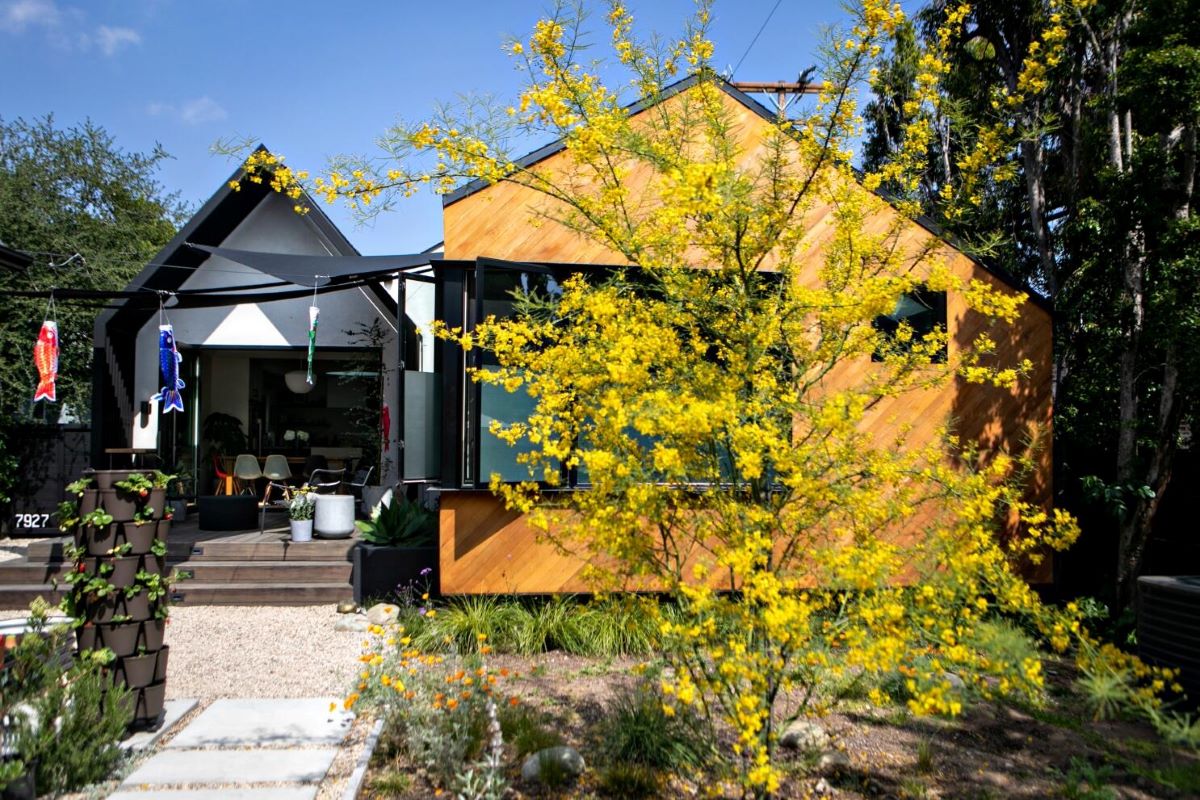




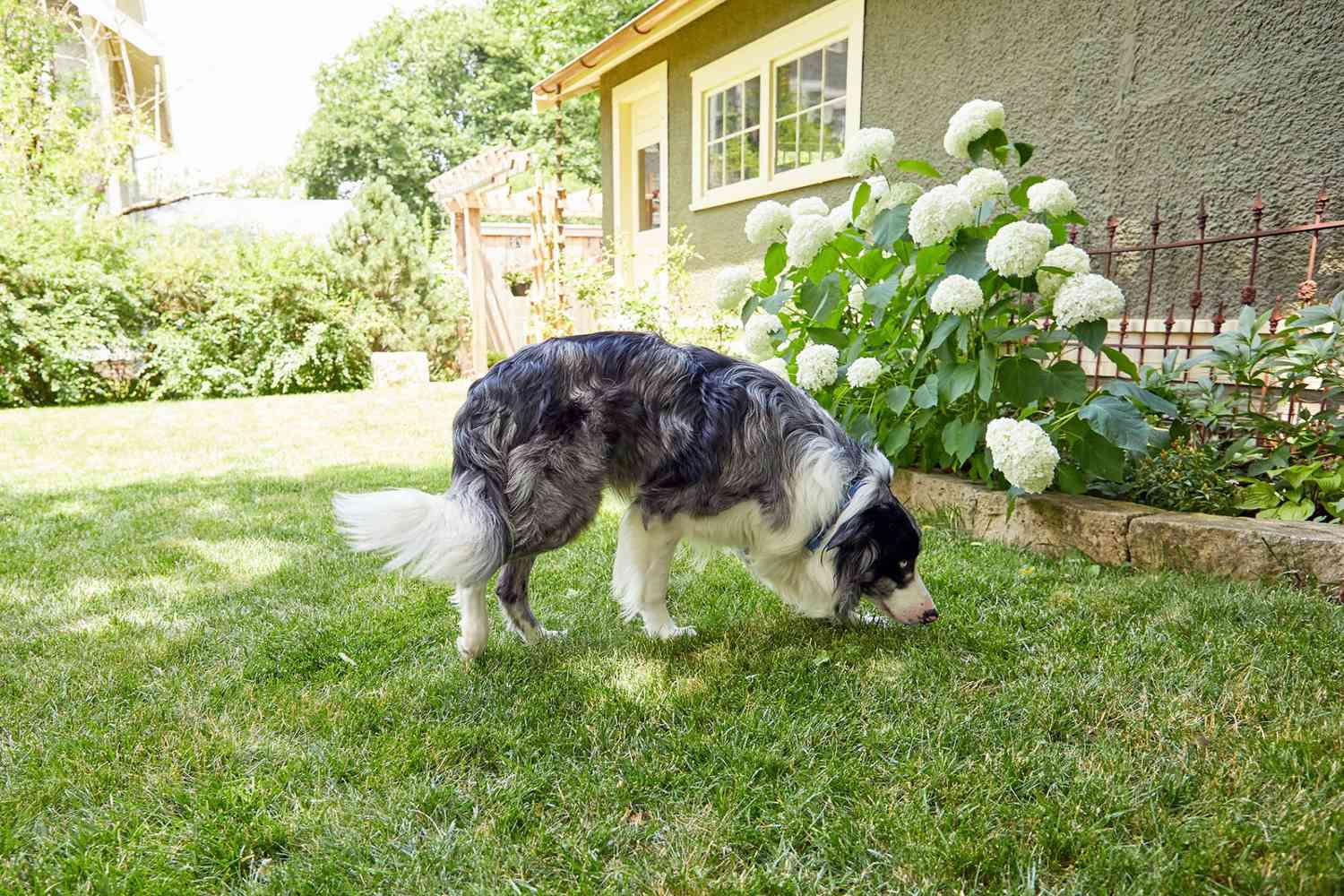

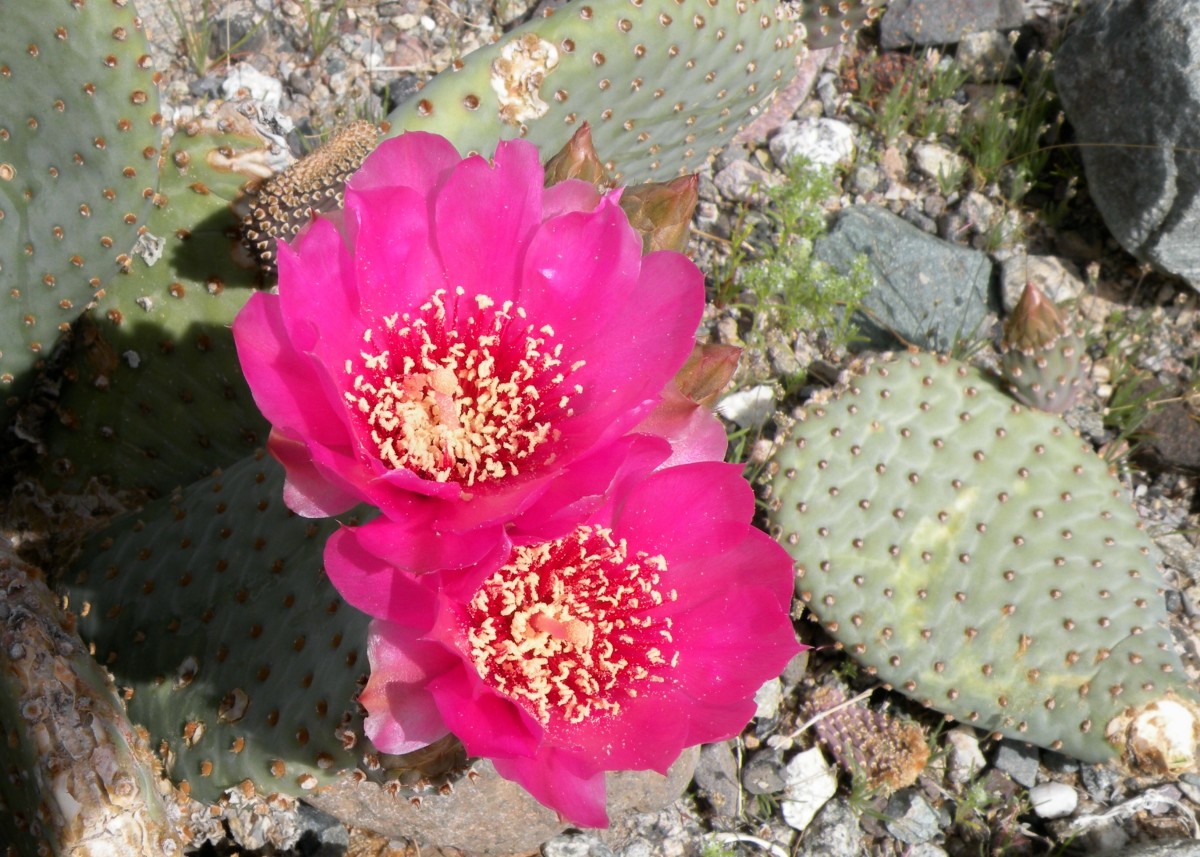

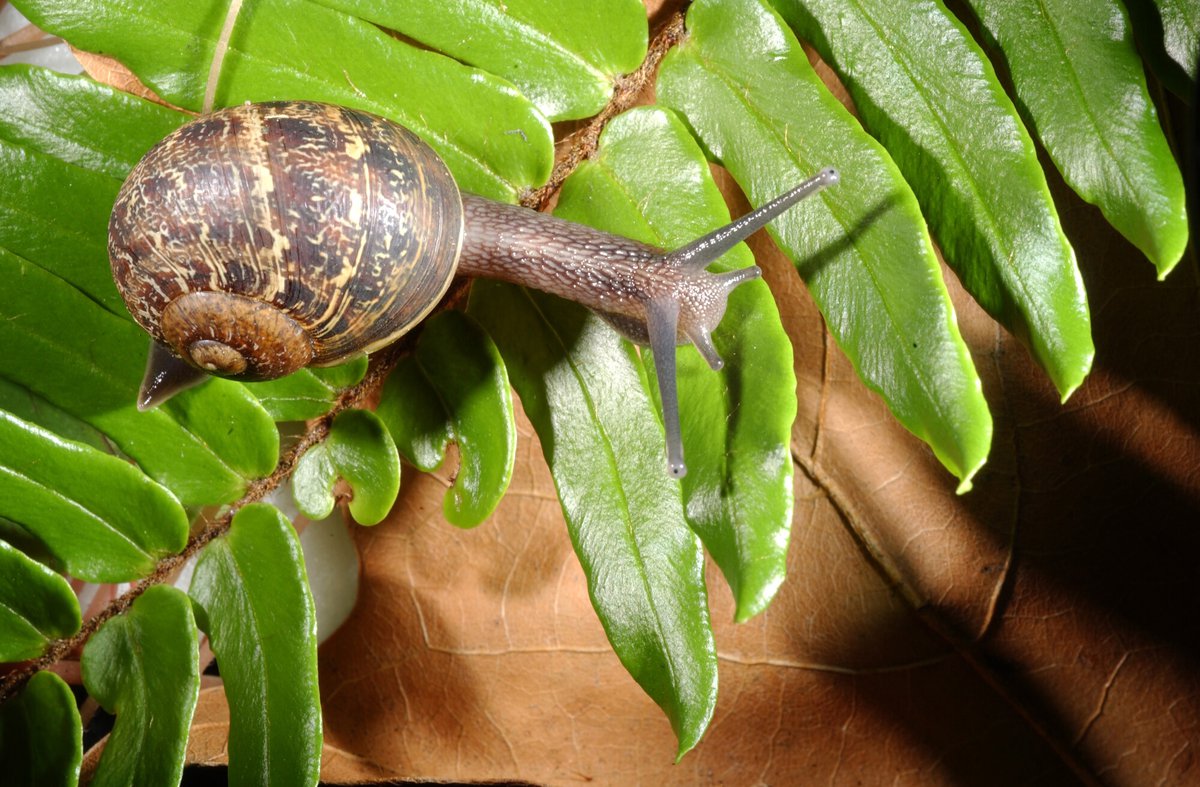


0 thoughts on “Health Inequalities And How Green Space Can Impact The Living Environment”